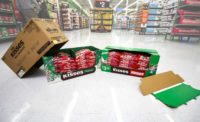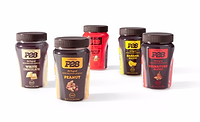Packaging
How McCormick is working toward more sustainable packaging
Mike Okoroafor, vice president of global sustainability and packaging innovation at McCormick, talks about how recyclable PET containers, glass jars and logistics are helping the company reach its sustainability goals.

McCormick and Company, Inc. recently released its 2017 Purpose-led Performance (PLP) Report.
The report — which focuses on the Company's responsibility to the long-term vitality of people, communities and the planet while delivering top-tier financial results — includes a packaging goal. Specifically, by 2025, the company wants to, “water use, reducing solid waste and developing sustainable packaging innovations.”
The plan also commits the company to source 100 percent of branded ingredients sustainably, improve the livelihoods of 90 percent of smallholder farmers who grow McCormick's herbs and spices, and champion equality for women and people of color.
"McCormick's Mission to Make Every Meal and Moment Better includes our commitment to operate ethically and honestly," said Lawrence Kurzius, Chairman, President and CEO. "Through our focus on Purpose-led Performance, we are embedding sustainability from source to shelf, supporting our diverse workforce and actively participating in our communities across the globe. I am proud of McCormick's progress to date and look forward to updating our stakeholders throughout this exciting journey."
Mike Okoroafor, vice president of global sustainability and packaging innovation at McCormick, took some time to discuss the company’s focus on sustainable packaging, and how recyclable PET containers, glass jars, and logistics are helping the company reach its goals.
Food Engineering: Can you describe the new 2017 Purpose-led Performance (PLP) Report, and what inspired McCormick to create it?
McCormick’s 2017 PLP Report highlights our efforts to improve the health and well-being of all people; build vibrant communities where we live, work and source; and make a positive impact on the planet. The report also outlines McCormick’s newly defined approach to Purpose-led-Performance and includes a new set of new 2025 goals which are informed by science and align with the United Nations Sustainable Development Goals.
We recently introduced a new mission and vision and were inspired to create this report to communicate about our commitment to make every day better with a responsibility to people, communities and the planet.
Why was it important to include sustainable packaging solutions as part of the company’s goals?
Packaging is a key priority for McCormick. It plays a crucial role in helping us prevent food waste, guaranteeing our high-quality standards and informing our consumers. It also helps us curb our resource and carbon footprint and contributes to other important objectives on our sustainability agenda, such as the elimination of BPA (Bisphenol A) from all of our packaging by the end of 2018.
What are some examples of ways the company is or will create more sustainable packaging?
In our 2017 Purpose-Led Performance Report we laid out a series of 2025 goals, which includes a 25 percent reduction in carbon footprint from packaging. We have already made progress in this area including:
- Redesigning our iconic OLD BAY and Black Pepper cans with a fully recyclable PET container, which equated to a 16 percent reduction in associated carbon emissions.
- A 10 percent reduction in material for all European glass jars, resulting in reduced weight and associated carbon emissions from production and transport; and
- Achieving 43 percent carbon footprint reduction by improving logistics and using fewer trucks for transport at our location in Haddenham, England.
How does the company plan to balance the possible price increases related to changing its packaging with the need to keep prices low for consumers?
We anticipate that our packaging changes will result in cost savings for the company and will therefore not impact pricing. For instance, reducing raw materials and packaging waste has resulted in over $2 million in savings in our Hunt Valley location alone.
For more information and to view the 2017 PLP Report, visit www.mccormickcorporation.com.
Looking for a reprint of this article?
From high-res PDFs to custom plaques, order your copy today!






